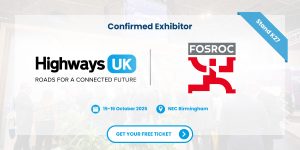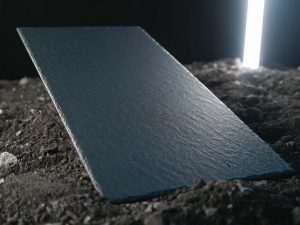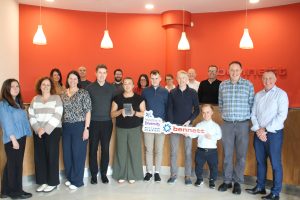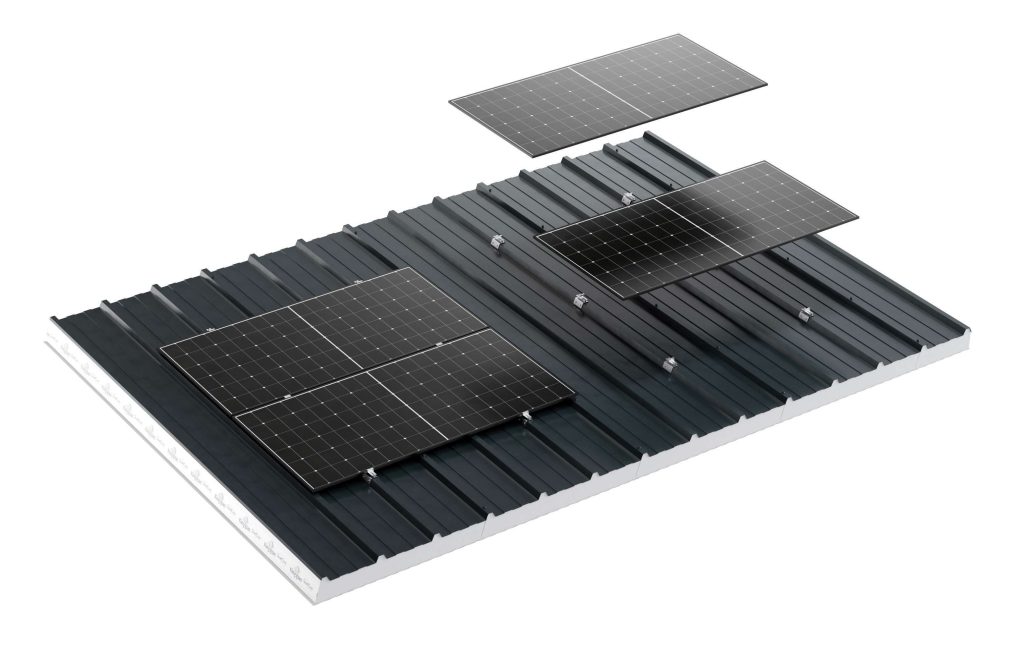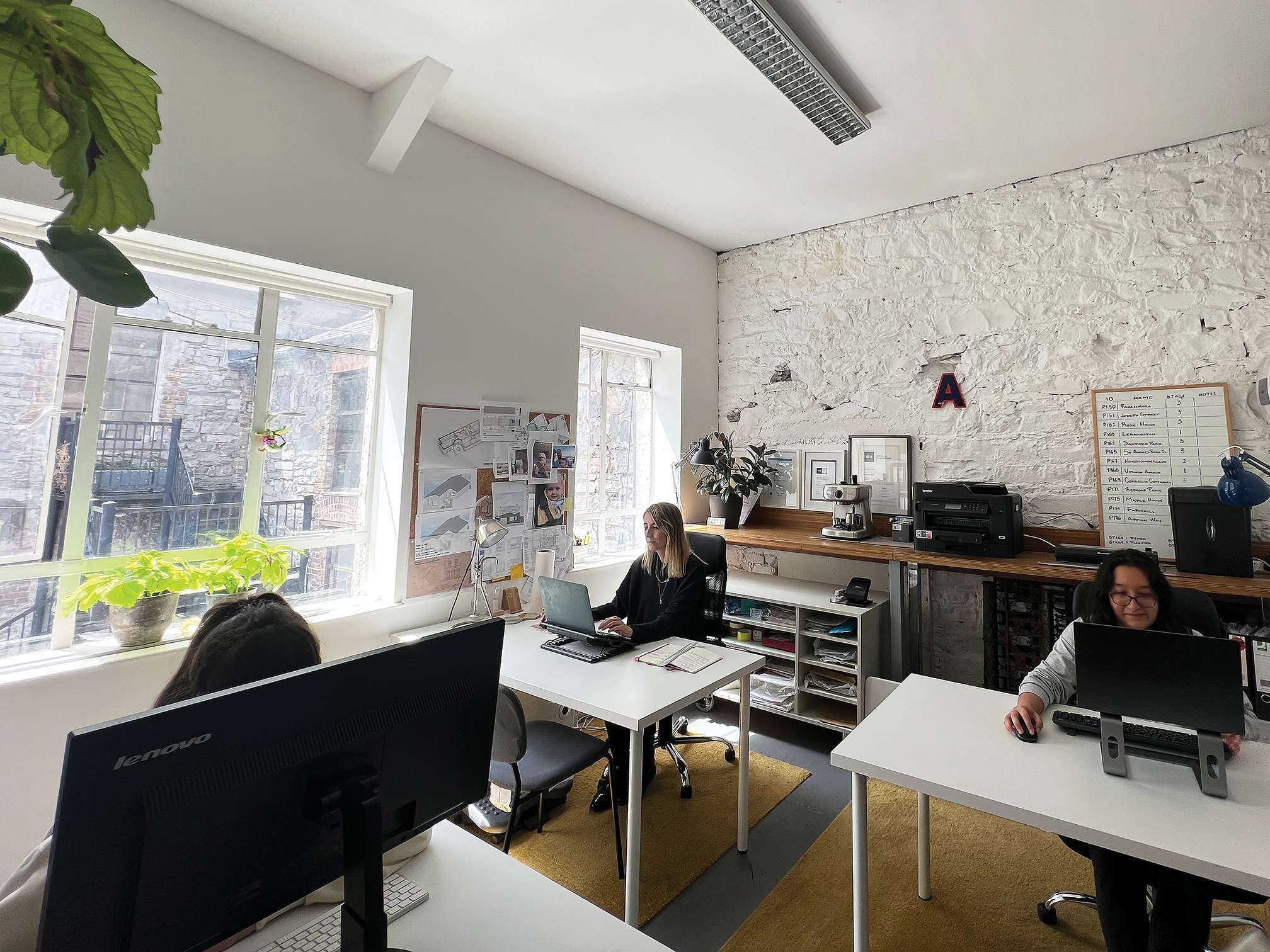
IN PRACTICE WITH… STUDIO AND
Ciara McGonigal at Studio And talks about current projects, the beauty of conservation work and the privilege of working as an architect

When did you set up the practice?
I established Studio And in 2017. Before that, I had lived and worked in Argentina for six years. The original plan had been to get some work experience there for about a year, but I ended up getting a great job in a practice that was tied to a construction company. After a couple of years I was made Director of Architecture, so managed to get some really good hands on experience. They had a very holistic way of working which I was really drawn to and which I applied to my own practice when I eventually returned home.
How does that work in a practical sense?
It very much depends on the client’s brief, but for example if we’re working on a domestic project, we’re taking into account from an early stage what sort of joinery is required, where storage will be needed, the floor and surface finishes etc. We’ve found that considering every aspect from an early stage has helped eliminate a lot of issues when you get to site.
What were the reasons behind choosing Argentina as a good place to gain work experience?
I’m always asked that question. I had Leaving Cert Spanish and spoke the language, or at least I thought I did. When I arrived, I realised very quickly that my level of Spanish wasn’t as useful as I thought it would be. But I had a basic grasp, plus I’d never been to South America. I really enjoyed working at the company I was with; being part of a construction company meant lots of on-site experience and working with tradesmen and skilled craftspeople allowed me to soak up their knowledge. Aside from that, it was great to experience the amazing culture in Argentina. The people are so warm. It was a great place to live.

Do you miss it?
In ways, but at the time I was ready to come home. One of the things that makes it difficult to practice in Argentina, and it’s something that’s very topical at the moment, is that it’s a country that suffers from hyperinflation. It can be up to 40% a year, it’s really extreme. For construction projects, which are by their nature long anyway, it means that you’re constantly repricing jobs.
Where did your interest in architecture come from?
My godfather and his wife were both architects, my uncle studied architecture and I have a cousin who’s an architect. So there were always architects around when I was younger. When I was about 10 years old, my parents took me to see the Sagrada Família in Barcelona. I remember thinking it was the most amazing thing I’d ever seen. That really piqued my interest and so I started actively working towards my goal of studying architecture in college. It was pretty much the only thing I really wanted to do.
On a practical level, what’s it been like running your own business?
It’s tough work running your own business, for sure. Obviously there are a lot of skills that you’re not taught in college and so there are elements that you have to explore on your own. When you work for someone else, you don’t really have to question how taxes and invoicing and all of those things get done. Getting to grips with the business side of running your own practice is also quite thrilling and rewarding; you’re growing and developing in ways that perhaps you hadn’t considered before.
How many members of staff do you have and is it difficult to source employees?
It fluctuates but at the moment we have two. Yes, it is quite hard to get skilled staff at the moment. Hopefully, it’s a situation that will improve once people start coming back to Ireland. I think a lot of people left at the beginning of the pandemic and perhaps that’s what has exacerbated it. We’re finding that contractors are also finding it difficult to get people and that’s really slowing up projects.
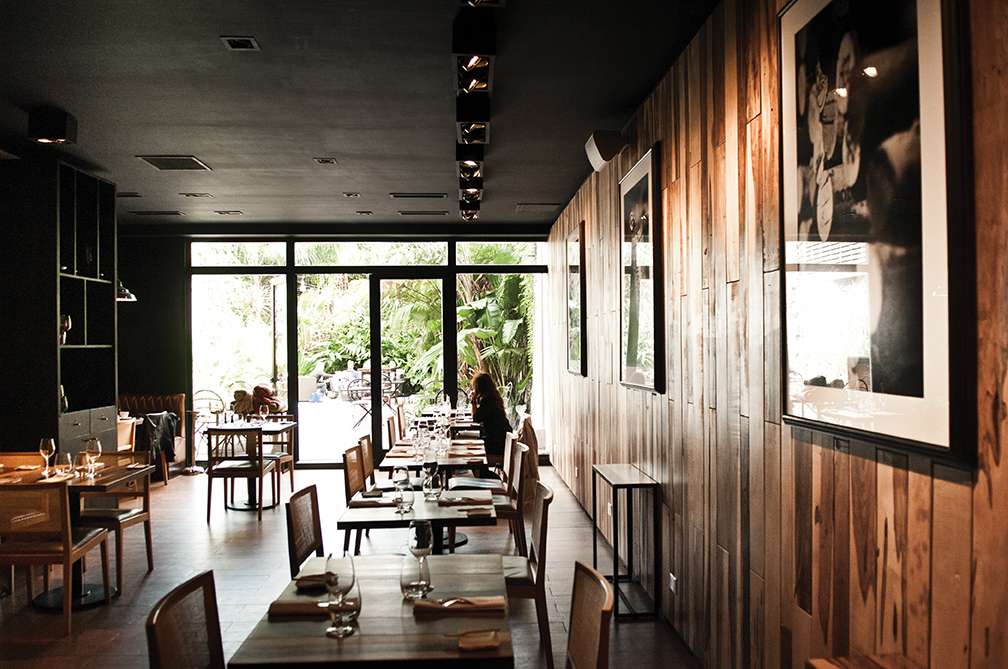
What kind of projects are you working on?
At the moment, we have a range of commercial and domestic work. In Blackrock in Co Dublin, we’re working on an office fit-out project over four floors. That’s for a client who wants to create a more future-proofed, post-Covid design solution. The brief is for a flexible design that allows for co-working, as well as spaces for team projects. That’s been a very interesting project in that we’re reacting to their current needs, but also trying to keep it flexible enough so that it can be adapted in the future if required. We’re also working on a protected structure in County Dublin – a large standalone house in the Art Moderne style with crittal windows and mass concrete walls. That’s been a really lovely project to work on. We’re also just starting on another protected structure that also contains a national monument. We met with the archaeologists on site just yesterday to get an idea of what their works will consist of. I’m grade three accredited in conservation and fascinated by older structures; it’s amazing to be able to peel back the layers and get to grips with how a structure got to its current iteration.

Would you say conservation projects interest you the most?
I wouldn’t say they’re necessarily a preference, but I am quite passionate about working with protected structures in particular. Argentina is a relatively new country compared to Ireland and I think working over there gave me an appreciation for how old some of our structures really are. Some of them are hundreds of years old but still standing, thanks to how well constructed they were. There’s a scale and generosity to a lot of the Georgian and Victorian structures in Ireland that would be quite hard to replicate today. Of course, they’re also beautiful; you’re starting with a very beautiful shell and the intention is to try and preserve that and be as respectful as possible to that original intent.
What effect did Covid have on the practice?
Projects that were on site obviously had to stop. Like most practices, we stagger projects starting on site throughout the year so they’re at different stages. That meant there was a backlog as projects were completing a lot later than they were originally programmed to finish. Supply chain issues also had an impact. If you can take a positive from it though, I think we all found that there are a lot of meetings that don’t necessarily have to be in person anymore. Site visits of course have to be carried out on site but there are meetings that are just as effective when they’re carried out online. The construction industry is ramping up and as a practice we’re a lot busier, so from a time management point of view, being able to move meetings online is a great benefit.
Did staff move to remote working?
We sometimes work from home, but we have a large office space in Smithfield where it’s possible to socially distance. Personally, I prefer to be in the office so for those of us who wanted that option, we were fortunate to be in a position where that was possible.

Has the rising cost of materials affected the practice?
Absolutely, it’s affecting every practice and every project. We’re lucky in that we haven’t had to stop any projects on site, but we have had smaller domestic projects that haven’t advanced as people simply can’t afford to do the work at the moment. The difference in cost between pre-Covid and what we’re faced with now is huge, it’s pushing projects right out of the client’s comfort zone. For larger projects, there’s often a way of absorbing or changing a particular aspect to get it to where the client might be comfortable with the cost. We always use a QS; I think in the current market, a QS is a necessity when it comes to cost control. I really do feel for clients at the moment and also for contractors. They’re also in an uncertain situation.
Is there a particular project that has helped increase your profile?
There are two recent projects that have gotten us a little bit of attention. One is Swing Step House, an end of terrace house that had just one owner before my clients. It had no central heating, one semi external downstairs toilets and no insulation. The clients wanted a house that would support family life, that was more sustainable and performed better environmentally. They also wanted the design to reflect the social aspect of their lives. The actual extension that we added was very small. For us, the design was more an exercise in examining the existing ground floor plan and trying to get the most out of it due to a tight budget. One aspect of the house that the clients really liked when they bought it was its dual aspect, one room deep, so that was something that we really strived to retain. The design involves a lot of bespoke joinery and actually, this house is a good example of a project where we took the client’s requirements into account from the very beginning. Their hobbies include photography, longboarding and surfing so we knew they’d need storage for ski and surf equipment. They also had a dog who featured heavily in the brief, so we ended up building an extended black brick plinth on the fireplace so that he had a place for his bed. The other project is a protected structure in Ranelagh. The works consisted of an infill extension to the rear return. We really focused on trying to adapt the existing footprint and getting the most out of the original space. I think those two projects in particular have garnered us attention, as lots of people have similar houses but don’t know what to do with them.
What do you enjoy about architecture?
Architecture is a tough job at times, but it’s also very rewarding. One of the biggest rewards is when you’ve been exploring something on paper or on screen for so long and then you see the final built structure. That’s really exciting. For me, the excitement of that hasn’t diminished at all. Grafton Architects once said it’s a real privilege to be an architect. I completely agree with that. I enjoy considering the user experience, because that’s what makes every project different and what throws up new problems that need to be solved or new items that have to be accounted for in some way. It’s what helps keep architecture fresh and interesting.
____________________________________________________________________________
Denise Maguire Editor of Irish Construction Industry Magazine & Plan Magazine
Email: denise@mcdmedia.ie WWW.MCDMEDIA.IE


